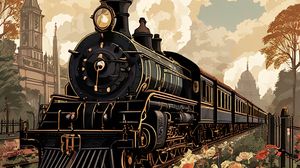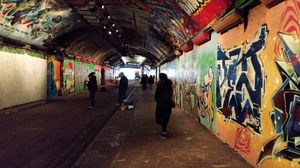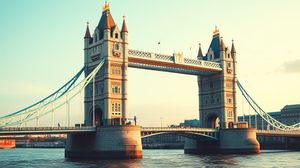
The London Necropolis Railway Station in Lambeth was an extraordinary part of London's transportation history. Established in the mid-19th century, it served as a unique railway service specifically designed to transport the deceased and mourners from London to the newly established Brookwood Cemetery in Surrey. This was a solution amid London's escalating burial space crisis, prompted by a rapidly growing population.
Opened in 1854, the station was initially located near London Waterloo and operated by the London Necropolis Company. The service was notable for its special trains equipped to carry both coffins and passengers, with different classes of service corresponding to one's social status—a reflection of Victorian societal structures even in death.
Due to its purpose, the station was built with a level of discretion and functionality uncommon for typical railway stations. The architecture was unassuming, eliminating elaborate designs often characteristic of railway infrastructure during that period, instead focusing on an efficient flow conducive to its particular function.
The station's operations were significantly impacted by the Blitz during World War II, suffering damage which contributed to its eventual closure. In 1941, after an air raid severely damaged the building, the service was discontinued and never resumed, marking the end of a unique chapter in London's railway history.
An intriguing aspect of the station is its classification system for the deceased, which organized services into first, second, and third classes. This system dictated the quality of the service in death much like it did in life, from the carriage the coffin was placed in to the services available at the cemetery.

Making the Most of Your Visit:
Although the original London Necropolis Railway Station in Lambeth no longer stands, exploring the nearby area where it once existed offers a fascinating glimpse into this curious chapter of London's past.
Start by taking a walk around Westminster Bridge Road, where the station was located. It's a bit surreal to imagine the comings and goings of those unique funeral trains. Look for any historical plaques or markers that might provide additional context.
The architecture may be long gone, but some records and photographs of the station and its operations might be available at the nearby London Transport Museum. This could be a fascinating detour to understand the broader history of London's railways and the Necropolis line's unique role within it.
If you're keen on cemeteries and related Victorian history, consider making a journey to Brookwood Cemetery itself. Although it's not in Lambeth, it was the destination for those Necropolis trains and is significant in its own right as one of the largest cemeteries in the world.
Check out local historical societies or online archives. Sometimes these organizations offer guided walks or have virtual tours/documents regarding the London Necropolis Railway, providing unique insights you might not find elsewhere.

Visiting Times & Costs:
The original London Necropolis Railway Station in Lambeth no longer exists as it was heavily damaged during the Blitz and subsequently closed in 1941. Therefore, there is no public access to the station itself.
However, visitors can explore the area around Westminster Bridge Road and look for historical plaques or markers that might offer greater insight into this unique aspect of London's past.
Entrance to the nearby areas is typically free, as they are public spaces. The London Transport Museum, where additional information and exhibits related to London's railways might be found, does charge an entrance fee.
Accessibility will depend on the specific sites visited, such as the street area around Westminster Bridge Road or the London Transport Museum. It is advisable to check in advance for any accessibility accommodations or restrictions at particular sites.

Address & Map:

Nearby:























